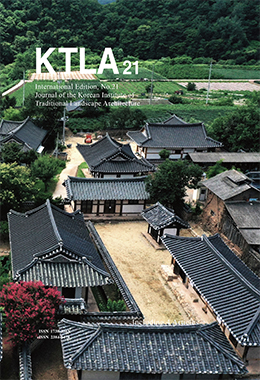‘시왕’이란 개념은 전통 사찰 명부전의 공간 인식과 특징을 나타내는 중요한 불교문화요소로서 주로 도상학적 관점에서 연구를 진행하여 도불 사상의 융합과 각 요소들의 문화 사상적 함의를 도출하지 못한 아쉬움이 남는다. 이에 본 연구는 도교 경전인 『옥력초전경세(玉歷鈔傳警世)』와 불경 『불설예수시왕생칠경(佛說豫修十王生七經)』을 중심으로 명부전의 시왕도에 나타난 명부 신앙의 삽화 구현에 나타난 유불도 혼합 양상과 그 차이점에 대해 비교 연구하였다. 그 구체적인 결과는 도교의 경전과 불경의 속성에 따라 시왕의 주존과 권속, 지옥도의 유무가 달리 나타났다. 이는 모두 사후 세계의 망자의 과보에 따른 심판을 다루고 있지만, 『시왕경』은 과보를 없애고 공덕을 쌓는 예수재(豫修齋)를 강조한 반면, 『옥력』은 중생들에게 지옥의 실상을 보여 공포심을 주어 과보를 짓지 않도록 하기 위해 지옥도가 구체적으로 드러남을 알 수 있었다. 이외에도 도상에 나타난 전각(殿閣)과 사자(使者), 육도(六道)의 명칭을 통해 도불문헌의 속성을 유추할 수 있었다. 이를 통해 사찰 명부전의 시왕도에서 보이는 도상은 『시왕경』의 근본 사상을 근저로 하고 있지만, 『옥력』의 지옥도를 더욱 많이 차용하고 있으며, 유불도 삼교가 혼합되어 민간에 널리 퍼져 사후 세계에 대한 인식의 단면을 엿볼 수 있었다. 이를 위한 구제 방법으로 명부전과 사찰에서 거행되었던 다양한 재(齋)의 양상과도 밀접한 관련이 있음을 유추할 수 있다. 이를 통해, 도교의 지옥과 불교의 명부신앙의 유력한 차이점은 도교는 일상 민간 생활과 밀접한 관련을 맺고 있지만, 불교는 도교에 비해 보다 더 교리적 성격이 강함을 알 수 있다.
The concept of ‘Shiwang’, an important element in traditional Korean temple architecture that represents the perception and characteristics of the spatial arrangement in the hall of MyeongBu, has primarily been studied from a visual perspective. This leaves a sense of regret as it falls short of fully uncovering the fusion of Taoist and Buddhist philosophies and the cultural-symbolic implications of their respective components. Therefore, in this study focusing on Yùlìchāochuánjǐngshì (玉歷鈔傳警世, the Records of the Great Jade Emperor), a Book of Taoist Scriptures, and Fúshuōyùxiūshíwángshēngqījīng (佛說豫修十王生七經, the Scriptures of Shiwang), a Book of Buddhist Scriptures, I comparatively researched the fusion tendency and the differences among Confucianism, Buddhism and Taoism, which are shown through the figuration of the religious faith of MyeongBu (冥府, the afterlife world where the deads are judged about what they did before death) on the painting of Shiwang painted in the hall of MyeongBu. The study results particularly show that there are differences on the Majesty of Shiwang and Majesty’s servants and on the point whether there is the look of hell in accordance with the attributes of Taoist and Buddhist scriptures.
They are all about the judgment based on the retribution of the dead after death. The Scriptures of Shiwang emphasize YeSuJae (豫修齋) rite to get rid of retribution and practice good deeds while the Records of the Great Jade Emperor clearly shows the look of hell to make the people see the real look of hell so that they can be afraid of the hell and shall not make retribution.
In addition, I could infer the attributes of Taoist and Buddhist literatures through the names of JeonGak (殿閣), SaJa (使者) and YukDo (六道) shown on such paintings and scriptures, which indicate that the figuration shown on the painting of Shiwang in the halls of MyeongBu, Buddhist temples are based on the fundamental thought of the Scriptures of Shiwang; the painting of hell of the Records of the Great Jade Emperor was more used; Confucianism, Buddhism and Taoism were widely spread out in a fused form in the folk world making it possible to see the people’s recognition of the world after death. The painting and scriptures are thought to be closely related with the tendency of a variety of Jae (齋, rite) that were held in the halls of MyeongBu and Buddhist temples for salvation, which, therefore, indicates that there is a clear difference between the hell of Taoism and the religious faith of MyeongBu of Buddhism: While Taoism is closely related with daily folk life, Buddhism is more doctrinal than Taoism.




